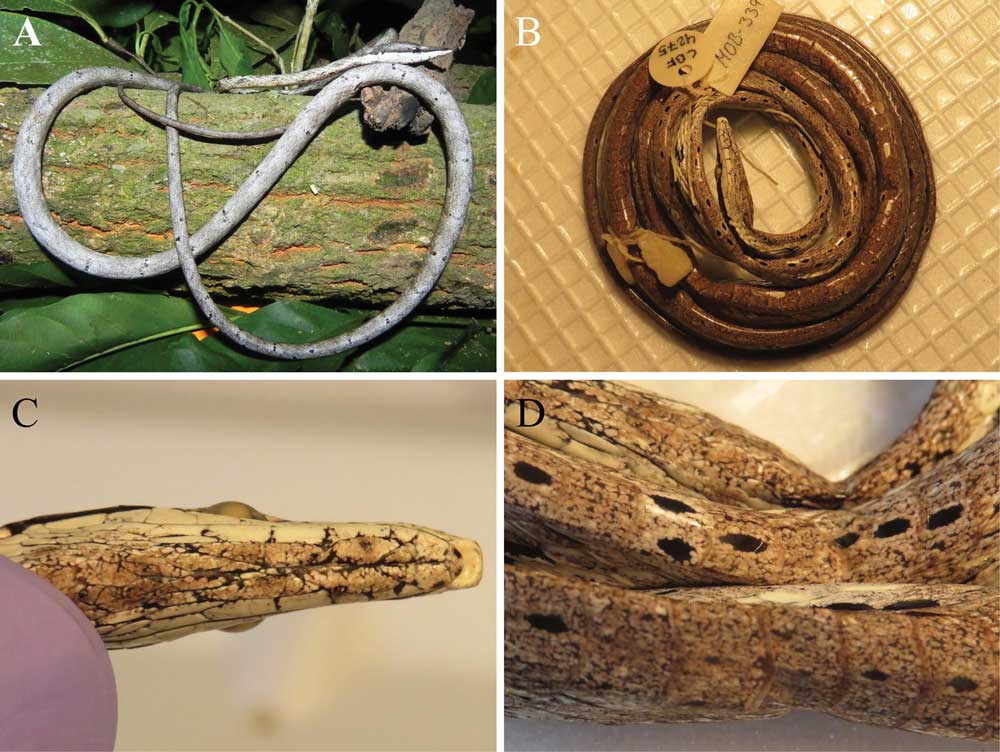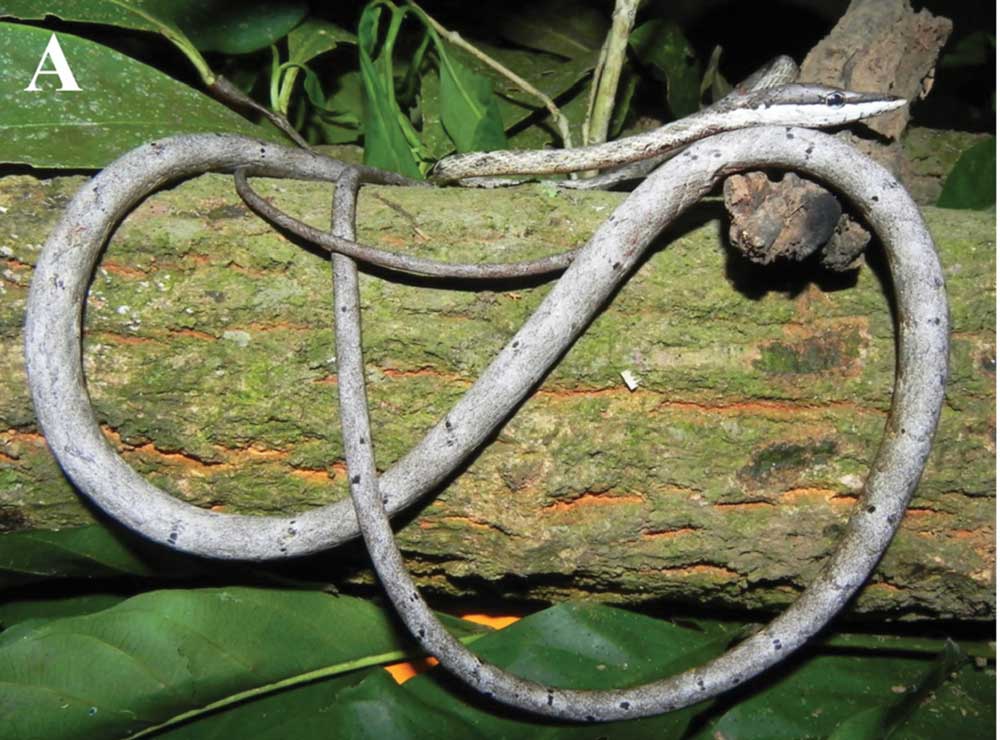One reason Oxybelis inkaterra may have not been observed in Bolivia previously may be due to its mimicry with their environment.
Researchers of Colubrid vine snakes and dipsadid sharpnose snakes have determined Oxybelis inkaterra, a vine snake native to most of South America has na extended range into Bolivia, where it has not been observed in the wild until three years ago.
The snake’s known range now extends about 207 km and 628 km southeast of its type locality in Puerto Maldonado, Peru. It joins both Oxybelis aeneus and Oxybelis fulgidus as the three known vine snakes to exist in Bolivia.
The researchers examined snakes in the herpetological collections in Bolivia’s Colección Boliviana de Fauna of the Universidad Autónoma del Beni José Ballivián, Beni; Colección Boliviana de Fauna of the Museo Nacional de Historia Natural, La Paz; Museo de Historia Natural Noel Kempff Mercado, Santa Cruz; and the Museo de Historia Natural Alcide d’Orbigny, Cochabamba.
Herping Bolivia’s Madidi National Park
The first recorded examination of Oxybelis inkaterra in Bolivia is an adult female that was collected in March 2005. It was discovered in Campamento Guacharos, El Palmar, Parque Nacional Carrasco. An adult male was collected June 24, 2015. While Oxybelis aeneus and Oxybelis fulgidus seem to share some overlap in the regions that they occur in the country, this current research on Oxybelis inkaterra does not show any overlap with the other species. One reason Oxybelis inkaterra may have not been observed in Bolivia previously may be due to its mimicry with their environment. This makes visually observing the species difficult.

First record of Oxybelis inkaterra (CBF-4275), Río Sipia, Franz Tamayo, La Paz, Bolivia. A, B. Dorsal and ventral view (surface mottled with dense black spots); C. Bottom of the head black spots; D. Eyespot on ventrals scales. Photos by Mauricio Ocampo (A) and Gustavo Rey (B–D).
During daylight hours it was difficult to locate Oxybelis inkaterra, the researchers wrote in their article. Collection occurred at night when the snakes were resting on branches or leaves. They were found at heights between 0 and 4 meters above the ground. In fact, one specimen was accidentally cut in two by a local guide who was clearing a work trail near one of the camps. The area in which the snake was killed retained dry and thorny vegetation with Bromeliaceae, Cactaceae, and Araceae plant families. The snake was said to have laid motionless and because this species looks like a tree branch, its mimicry is what got it killed, the researchers noted as the guide did not see the snake until it was too late.
The article, which provides the new data on Oxybelis inkaterra, also provides “morphometric information, meristic characters, coloration pattern, ecological aspects and natural history for the three species of vine snakes (O. aeneus, O. fulgidus, O. inkaterra) and two species of sharpnose snakes (X. argenteus, X. boulengeri) from the Bolivian lowlands.”
The researchers are Luis R. Rivas, Gustavo Rey-Ortíz, Cord B. Eversole, Randy L. Powell, Gonzalo Navarro-Cornejo, Edson Cortez, Mauricio Ocampo, Gabriel Callapa, Arturo Muñoz.
The complete research article, “Vine snakes (Oxybelis) and Sharpnose snakes (Xenoxybelis) (Squamata, Serpentes) from lowlands of Bolivia, with first records of Oxybelis inkaterra for the country” can be read on the Austrian Herpetological Society web site, Herpetozoa.



